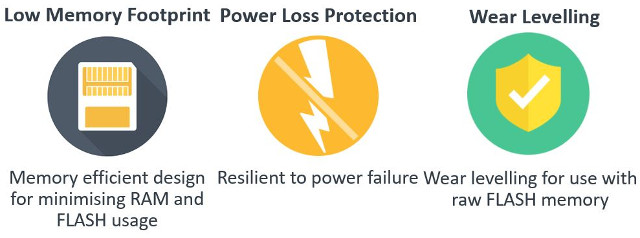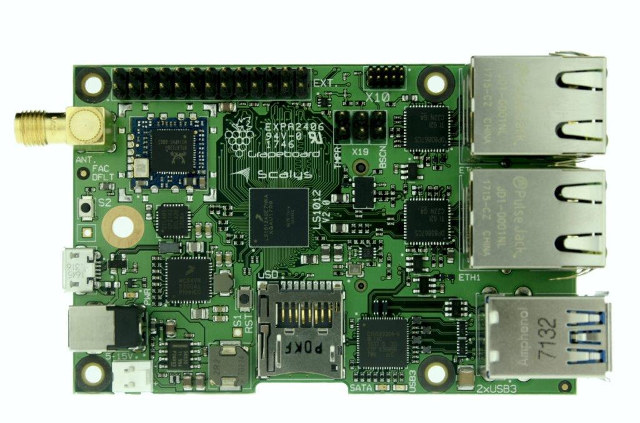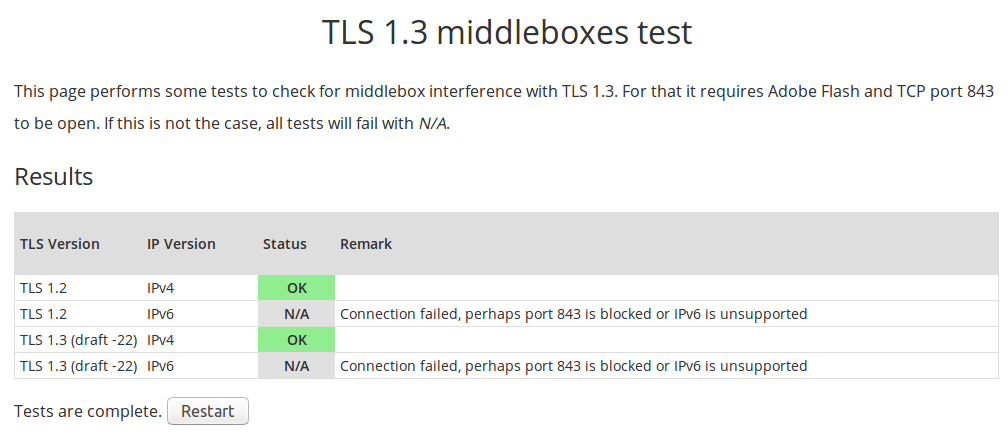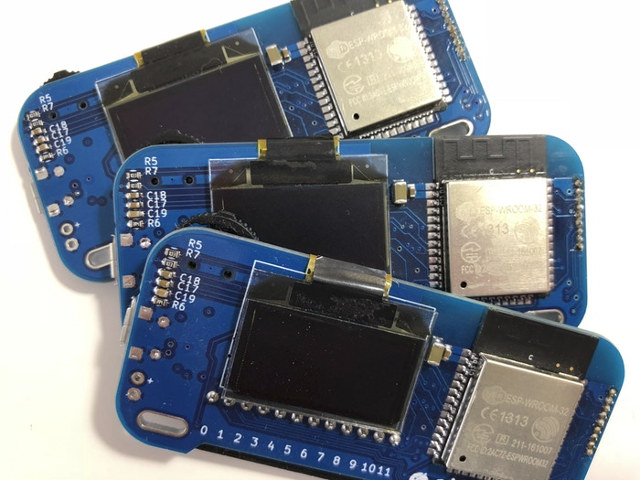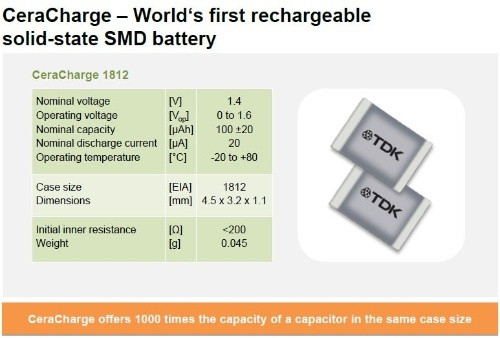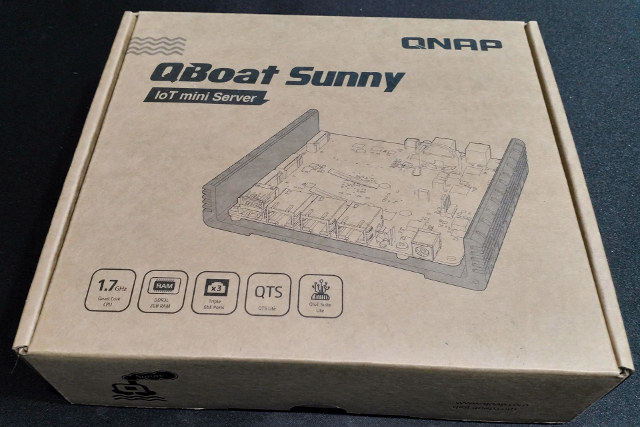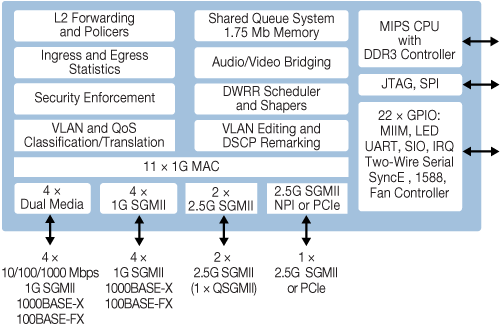Most devices need to store data either configuration files, sensor data firmware updates, and while it’s in theory possible to write directly to the storage device, it’s normally not a good idea to do so due to issues such as wear, which could lead to a premature death of your storage… LittleFS is an open source file system specifically designed for small devices such as IoT nodes for SPI NOR flash and SD card storage, and introduced in Mbed OS 5.7. The “high-integrity embedded file system” is resilient to power-cuts, supports wear-leveling, and comes in a small memory and storage footprint. Mbed support both FAT and LittleFS, so the latter was compared to the former with the following key highlights: Footprint – Code for LittleFS takes 13KB less storage than FAT, and 4KB less RAM Power loss resilience – The file system has strong copy-on-write guarantees, and storage on disk […]
Year 2017 in Review, Top 10 Posts, and Some Fun Stats
2017 is coming to an end, and as I do every year, I’ll take a look back at the year that was on CNX Software. The pace of development boards launches has not slowed down this year, and we get an even wider range from the low-end with Orange Pi or NanoPi boards, to much more powerful ARM boards, and some new entrants like Libre Computer. The same is true for TV boxes, most of which now support 4K HDR, ranging from ultra cheap models selling for less than $20 to higher end Android TV boxes, while mini PCs were dominated by Intel Apollo Lake models, although some Cherry Trail products were also launched. Processor-wise, Amlogic launched more Amlogic S905X derivatives with S905W/S905D/S905Z, which are popular in the TV box market. Rockchip’s most interesting processor this year was RK3328 quad core Cortex A53 processor designed for 4K HDR Android TV […]
Grapeboard Raspberry Pi Lookalike Comes with Dual Gigabit Ethernet, Two USB 3.0 Ports
Scalys is a startup founded in 2016 in the Netherlands by Sintecs in order to provide advanced high-performance embedded system solutions for automotive-, avionics-, defence-, industrial-, medical and telecommunication industries. So the company is rather new, but if you visit their website, you’ll find they already have several systems-on-module and single board computers (SBCs) based on NXP QorIQ processors. Grapeboard SBC is their latest product powered by NXP QorIQ LS1012A (LayerScape 1012A) single core SoC with 1GB RAM, and equipped with two Gigabit Ethernet interfaces, two USB 3.0 ports, an M.2 SATA connector, etc… that make it suitable for IoT applications such as sensor/IoT gateways, communication hubs, and secure edge devices. GrapeBoard specifications: SoC – NXP QorIQ LS1012A single core Cortex A53 processor @ up to 800 MHz with Packet Forwarding Engine System Memory – 1GB DDR3 Storage 64Mb (8MB) SPI NOR Flash for BCD and bootloader, 512Mb/64MB SPI NOR […]
Help Testing TLS 1.3 Compatibility for a More Efficient & Secure Internet
Transport Layer Security (TLS) is the protocol that allows for secure websites (via https), and currently, TLS 1.2 is the version most commonly used today, with 1.0 and 1.1 still supported by many servers for backward compatibility with older browsers, including the one running this blog. TLS 1.3 is the next version, already supported in libraries and server software such as wolfSSL or nginx, and promises to be more efficient – important for battery operated devices (IoT) – thanks to features like zero-RTT (0-RTT) mode, speedy with a restructured handshake state machine, and more secure. However, changes in security protocol may mess up connection with some browsers or middleboxes, as I experience when I enabled https on CNX Software using Let’s Encrypt with nginx and Cloudflare, with around 0.5% of users losing access due to using older web browsers and operating systems such as Internet Explorer on Windows XP. According […]
Obniz ESP32 Board is Programmable in JavaScript from the Cloud (Crowdfunding)
ESP32 WiFi / Bluetooth boards are now commonly supported by the Arduino IDE, and alternative firmwares are also available to program them using JavaScript (e.g. Espruino), or MicroPython. But if are familiar with JavaScript / Node.js, and don’t want to flash your own firmware, Obniz board could be an option. The board exposes 12 I/Os programmable from the company’s Cloud service, and features a OLED display used to show your program information, or a QR code to easily program the board from your smartphone’s browse once a WiFi connection has been setup. Obniz hardware specifications: Wireless Module – ESP-WROOM-ESP32 based on ESP32 dual core 802.11 b/n/g WiFi + Bluetooth LE WiSoC Display – 128×64 OLED display I/Os 12x I/O pins each configurable as GPIO, ADC, UART, SPI or I2C (no specialized pin, each can handle those functions) Up to 1A drive per I/O to control motors 3.3 or 5V selectable […]
TDK CeraCharge Solid State Battery-in-a-Chip is Designed for IoT & Wearables
We’ve recently seen solid state batteries are prone to dislodge current Lithium Ion battery technology as they are safer, support higher energy density, and faster charging. Such batteries are expected to be seen in car in the first part of the next decade, in smartphones starting possibly in 2019, but TDK has just announced their own CeraCharge rechargeable solid state SMD battery with mass production scheduled to start in April 2018. TDK CeraCharge battery-in-a-chip will come in compact EIA 1812 package (4.5 x 3.2 x 1.1 mm), offer a capacity of 100 µAh at a rated voltage of 1.4 V, and can be recharged up to 1000 times. Potential applications include IoT devices, real-time clocks, Bluetooth beacons, and systems for energy harvesting. The battery – which will look very similar to an SMD capacitor – does not include liquid electrolyte, and instead uses a solid ceramic element as electrolyte which rules out any risk of fire, explosion, […]
QNAP QBoat Sunny Review – Part 1: Unboxing, Closer Look, and Initial Setup
We spotted the QBoat Sunny at QNAP’s booth back at CES in January and much has changed since then. Not only did QNAP change from an Intel based solution to an ARM based one, but the product seems to have shifted from being a development board to a strange kind of IoT server. The QBoat Sunny sample that QNAP provided for us to look at is based on the Annapurna Labs AL-314 quad core ARM Cortex-A15 SoC which is clocked at 1.7GHz. This has been paired with 2GB of DDR3L RAM (non-expandable) and 512MB of NAND flash that isn’t user accessible, much as on their NAS products. This simply contains the core parts of the QTS Lite OS. As such, you need to install an M.2 SATA SSD to be able to get started with the QBoat Sunny. QNAP provides a list of compatible SSDs on its website, although some […]
Microsemi VSC7513 and VSC7514 MIPS SoCs for Ethernet Switches Get Initial Mainline Linux Support
Microsemi VSC7514 is a 10-port Gigabit Ethernet (GbE)/SMB switch supporting a combination of 1G and 2.5G Ethernet ports, and VSC7513 comes with basically the same features except it’s limited 8 ports. Both SoCs include a MIPS processor with DDR3 memory interface, and support industrial and enterprise Ethernet switching features such as VLAN and QoS processing. Microsemi VSC751x Ocelot family was unveiled in June 2016, but I only heard about them today, as Free Electrons recently added initial support for VSC7513 & VSC7514 chip into mainline Linux with the patch series available here. Microsemi VSC7514 specifications & features: CPU / Memory Interface – Integrated 500 MHz MIPS 24KEc CPU with MMU and DDR3/DDR3L SDRAM controller Ethernet Connectivity – 4x dual media copper ports, 2x 1G SGMII ports, and 2x 1G/2.5G SGMII ports Host CPU Interfaces – PCIe 1.x and NPI CPU interface Internal shared memory buffer (8 queues per port) Jumbo […]


